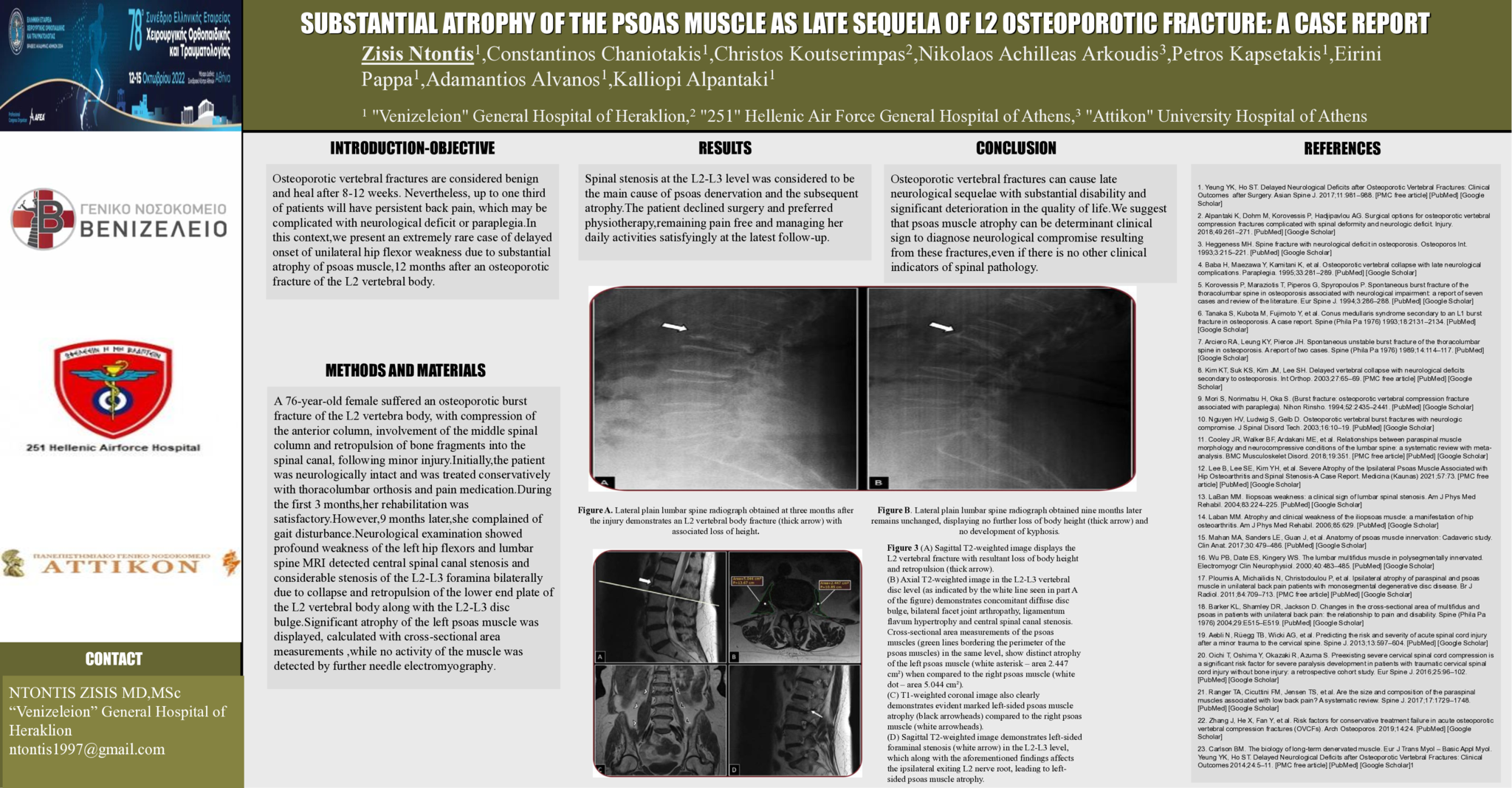ABSTRACT
Introduction-Objective:Osteoporotic vertebral fractures are considered benign and heal after 8-12 weeks. Nevertheless, up to one third of patients will have persistent back pain, which may be complicated with neurological deficit or paraplegia.In this context,we present an extremely rare case of delayed onset of unilateral hip flexor weakness due to substantial atrophy of psoas muscle,12 months after an osteoporotic fracture of the L2 vertebral body.
Materials and Methods:A 76-year-old female suffered an osteoporotic burst fracture of the L2 vertebra body, with compression of the anterior column, involvement of the middle spinal column and retropulsion of bone fragments into the spinal canal, following minor injury.Initially,the patient was neurologically intact and was treated conservatively with thoracolumbar orthosis and pain medication.During the first 3 months,her rehabilitation was satisfactory.However,9 months later,she complained of gait disturbance.Neurological examination showed profound weakness of the left hip flexors and lumbar spine MRI detected central spinal canal stenosis and considerable stenosis of the L2-L3 foramina bilaterally due to collapse and retropulsion of the lower end plate of the L2 vertebral body along with the L2-L3 disc bulge.Significant atrophy of the left psoas muscle was displayed, calculated with cross-sectional area measurements ,while no activity of the muscle was detected by further needle electromyography.
Results:Spinal stenosis at the L2-L3 level was considered to be the main cause of psoas denervation and the subsequent atrophy.The patient declined surgery and preferred physiotherapy,remaining pain free and managing her daily activities satisfyingly at the latest follow-up.
Conclusion:Osteoporotic vertebral fractures can cause late neurological sequelae with substantial disability and significant deterioration in the quality of life.We suggest that psoas muscle atrophy can be determinant clinical sign to diagnose neurological compromise resulting from these fractures,even if there is no other clinical indicators of spinal pathology.
- 9 προβολές






